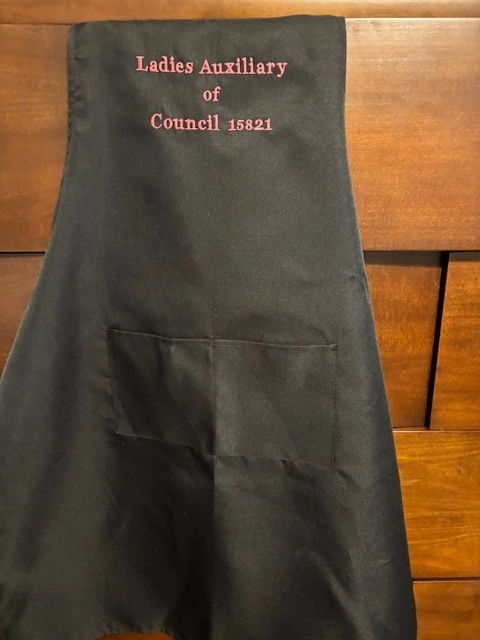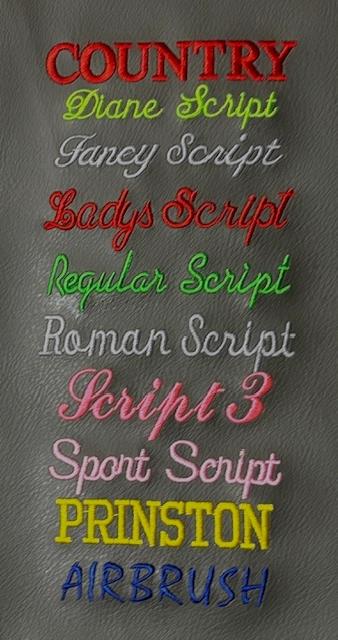The Art of Personalized Embroidery: Unlocking the Tricks to Creating Distinct and Memorable Designs
The keys to developing custom needlework styles that mesmerize the eye and leave a long lasting impression lie in a delicate balance of strategy, creative thinking, and focus to detail. As we delve right into the globe of customized needlework, we reveal the nuanced interplay in between thread selection, sew intricacy, and style personalization that elevates a plain garment to a work of art.
Choosing the Right Embroidery Threads
When selecting needlework threads, what crucial factors should you think about to ensure the very best outcomes for your custom styles? The selection of needlework thread is vital in determining the final end result of your embroidered design. One of the key considerations is the material of the string. Various materials such as cotton, polyester, rayon, and silk use differing degrees of sheen, toughness, and appearance. It is vital to choose a string product that complements the material you are stitching on and lines up with the desired appearance of the design.
Moreover, the weight or density of the thread plays a significant role in the look of the needlework. Thicker strings can include dimension and appearance to your layout, while finer strings are ideal for intricate information and little text. Additionally, considering the color fastness and washability of the string is essential to guarantee that your custom designs keep their top quality and vibrancy over time. By thoroughly assessing these elements and selecting top quality strings that meet your specific needs, you can improve the visual appeal and long life of your stitched productions.
Exploring Various Stitch Techniques
To dive into the world of 'Checking out Various Stitch Strategies', one need to grasp the details and nuances that each sewing method offers the art of embroidery. Various stitch techniques not just add visual passion however additionally add to the general structure and measurement of the design. One prominent stitch strategy is the satin stitch, which includes very closely stuffed parallel stitches to create a smooth and glossy surface area, ideal for loading in forms and creating strong lays out.
On the other hand, the backstitch is a functional method often utilized for laying out and adding fine information. It entails sewing in reverse to develop a solid line of embroidery. Furthermore, the French knot stitch includes a tactile element to designs, best for developing distinctive accents like blossom facilities or ornamental touches.
Exploring various stitch strategies enables embroiderers to have fun with light, darkness, and depth within their styles, raising the visual appeal and creative top quality of their needlework tasks. By mastering numerous sewing methods, one can open unlimited opportunities for producing distinct and memorable customized embroidery items.
Incorporating Personalized Design Elements
Having discovered the complexities of various stitch methods such as the satin stitch, backstitch, and French knot, the focus now shifts towards including tailored style components in custom-made needlework tasks. Customized style elements play a critical role in making embroidery tasks truly special and remarkable. One method to integrate customization is by adding initials, names, or substantial dates to the design. This not just adds a personalized touch yet additionally improves the emotional worth of the embroidery item.
An additional method to integrate individualized design components is by including icons or concepts that hold special significance to the recipient or reflect their passions and personality. For instance, incorporating a preferred flower, animal, or hobby-related icon can make the embroidery layout a lot more meaningful and tailored. Furthermore, picking colors that resonate with the recipient or line up with the desired theme can additionally boost the personalization of the embroidery project.
Grasping the Art of Shade Coordination

One trick aspect of shade coordination is comprehending color theory. This consists of understanding just how different shades interact with each various other, the emotions they communicate, and how they can be integrated to create visually appealing layouts. By applying color theory principles, embroiderers can produce unified color combinations that boost the overall appearance of the layout.
Additionally, focusing on comparison is essential in shade control. Making use of contrasting shades can aid certain aspects of the layout pop, improve legibility, and create an aesthetically vibrant embroidery Click This Link piece. By understanding the art of shade coordination, embroiderers can elevate their layouts and create memorable pieces that resonate with customers and visitors alike.
Enhancing Texture With Advanced Needlework Stitches

French knots, for instance, are best for adding little, increased dots to your layout, imitating the look of grains or developing a distinctive surface. Bullion knots, on the other hand, can be utilized to produce twisted, ropelike components that include a glamorous feeling to the embroidery. Seed stitching includes small, scattered stitches that can load in locations with a polychromatic appearance, while turkey job creates fluffy, dimensional accents similar to pet hair or vegetation. Trying out these innovative needlework stitches allows you to push the boundaries of conventional embroidery and produce really special and aesthetically discover this attractive structures in your styles.
Verdict
To conclude, the art of custom-made embroidery involves a mix of picking the ideal strings, discovering different stitch methods, incorporating personalized layout components, grasping color control, and improving texture with innovative stitches. By comprehending and implementing these crucial elements, embroiderers can create one-of-a-kind and unforgettable designs that display their creativity and ability. Embroidery fanatics can unlock more tips here the keys to producing gorgeous and custom pieces that stand out and leave a long-term perception.